Human Anatomy and physiology Module 1
1/55
There's no tags or description
Looks like no tags are added yet.
Name | Mastery | Learn | Test | Matching | Spaced |
|---|
No study sessions yet.
56 Terms
What are the levels of organisation?
The levels of organisation in the human body are Chemical level, cellular level, tissue level, organ level, system level and organism level
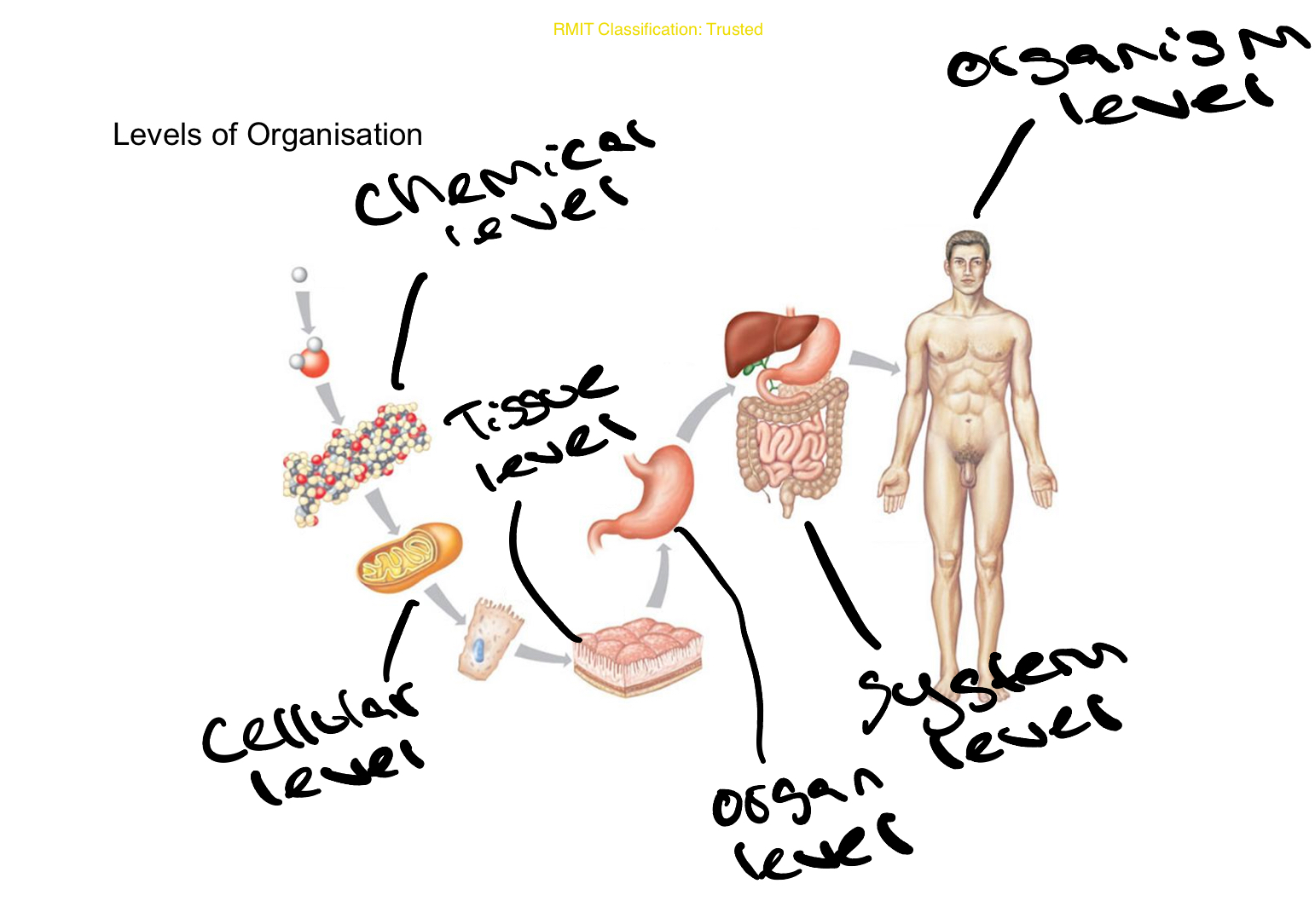
What are the different types of body systems?
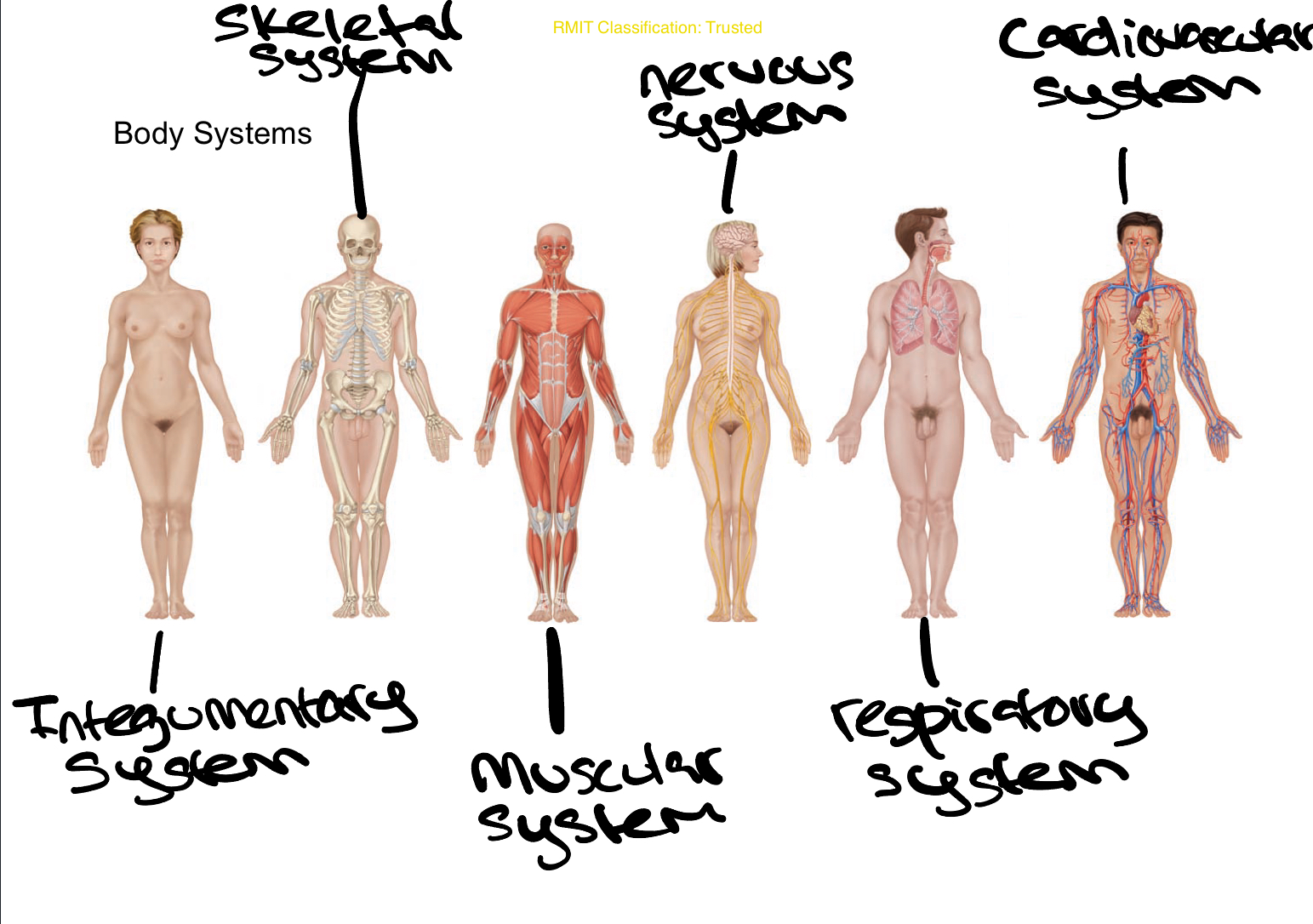
What are the different types of body systems?
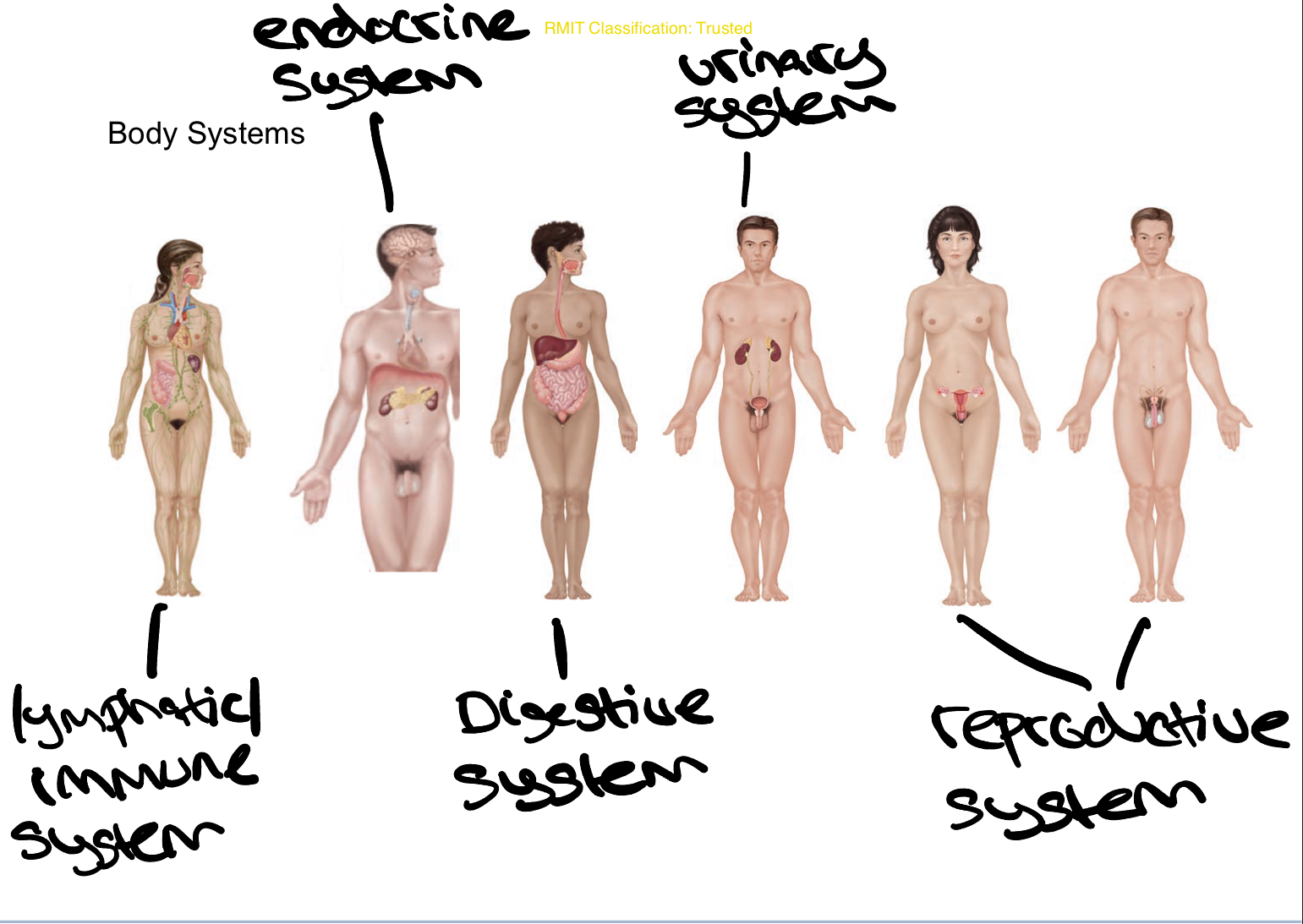
What is the plasma membrane?
The plasma membrane is the flexible partition that separates the cells internal environment from everything outside the cell
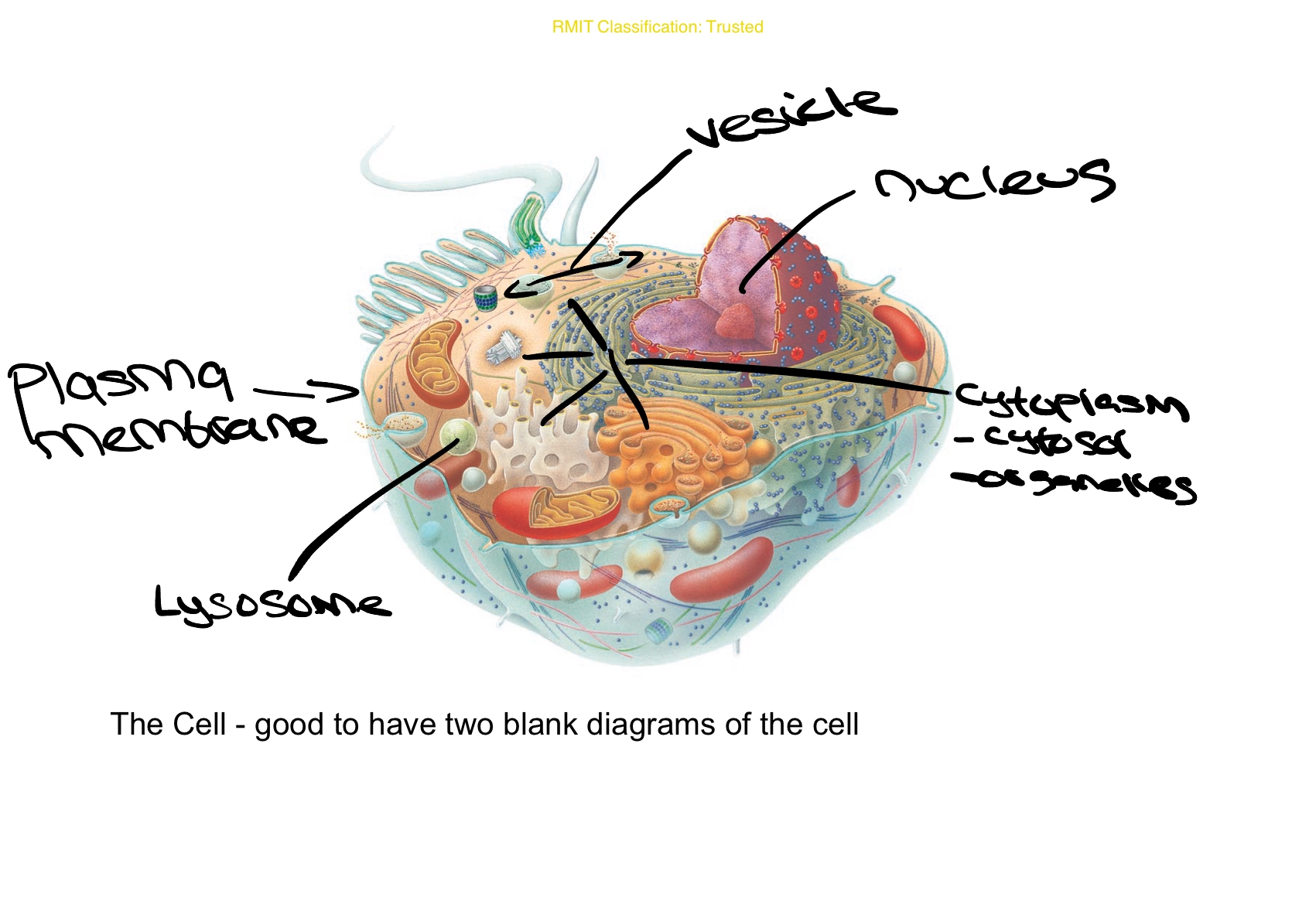
What is the cytoplasm?
The cytoplasm of the cell consists of everything that is inside the plasma membrane but outside the nucleus, consisting of the cytosol (The fluid in the cytoplasm) and organelles such as the cytoskeleton which is a network of protein filaments disperesed throughout the cell providing the cell its shape and structure
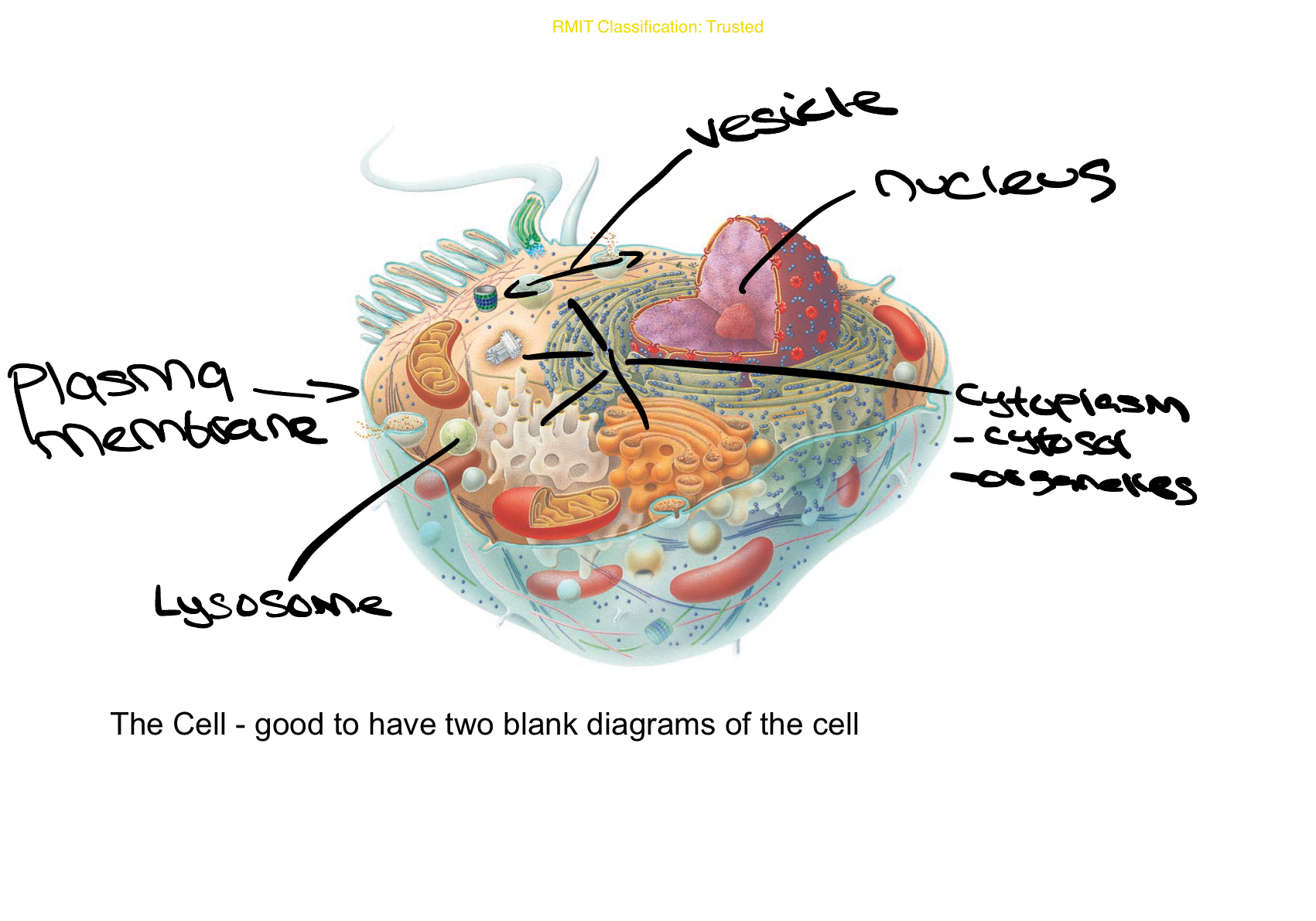
What is the nucleus?
The nucleus is a membrane-bound organelle that is separated from the cytoplasm by a nuclear envelope and houses the cell's genetic material (DNA) and regulates gene expression and cell division.

What is the ribosome?
Small organelles that synthesise proteins, which may stay in the cell, exit the cell or join the plasma membrane
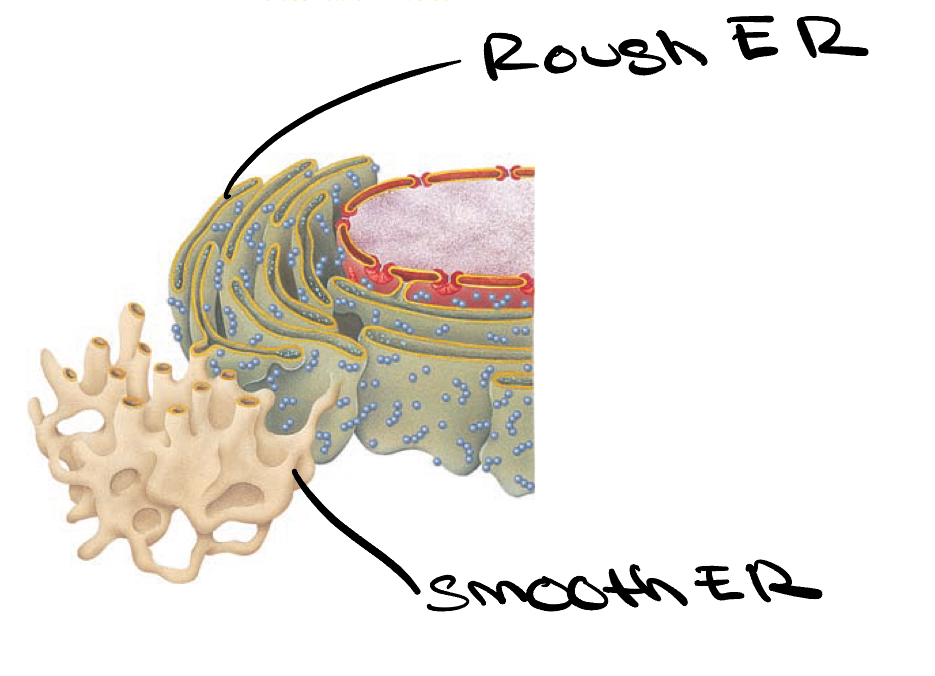
What is the rough endoplasmic reticulum RER?
Network of membranes in the form of flattened sacs, which extends from nuclear envelope to the cytoplasm, with the other surface covered with ribosomes that synthesise proteins
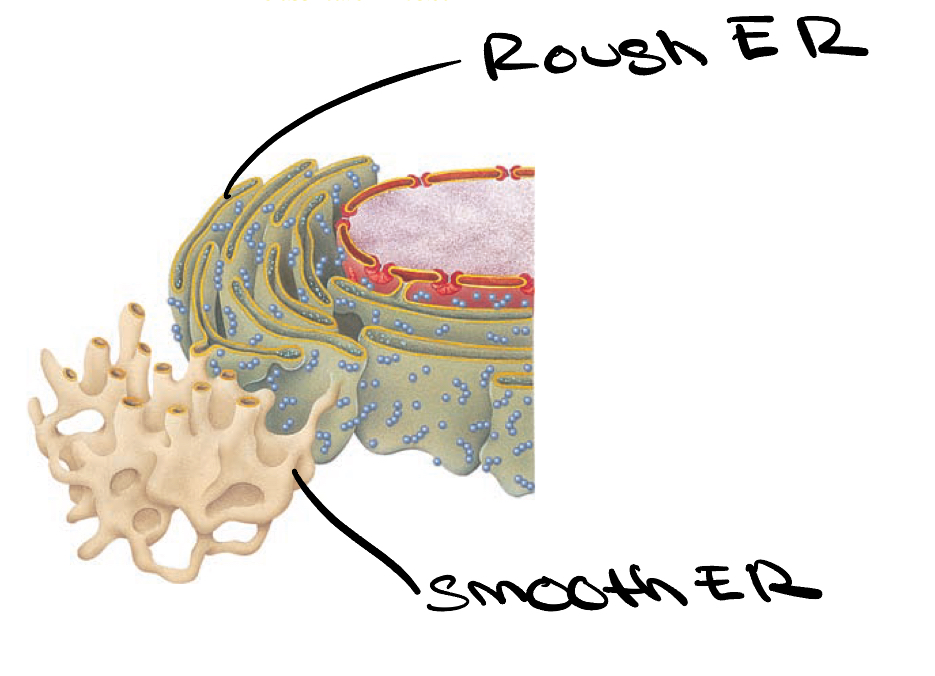
What is the smooth endoplasmic reticulum SER?
Network of membrane tubules, not containing any ribosomes and does not synthesize proteins.
What is the golgi apparatus?
A stack of flattened sacs that modifies and packages proteins into different types of vesicles that carry the proteins to different areas of the cell
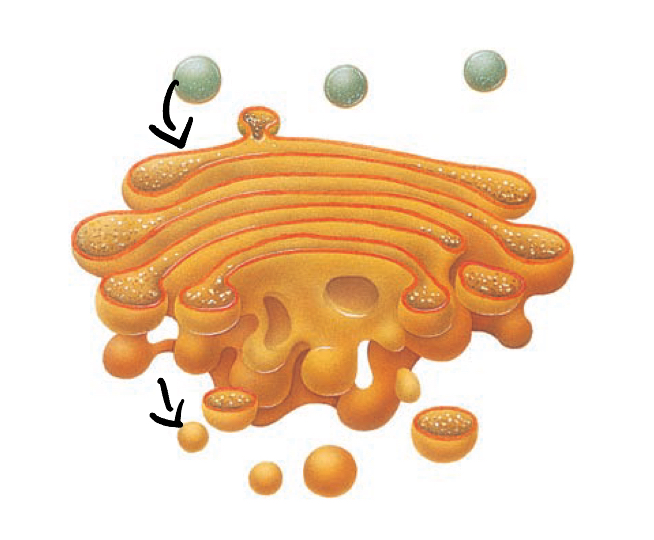
What is the mitochondria?
Organelle known as the powerhouse of the cell that generates ATP for cellular processes
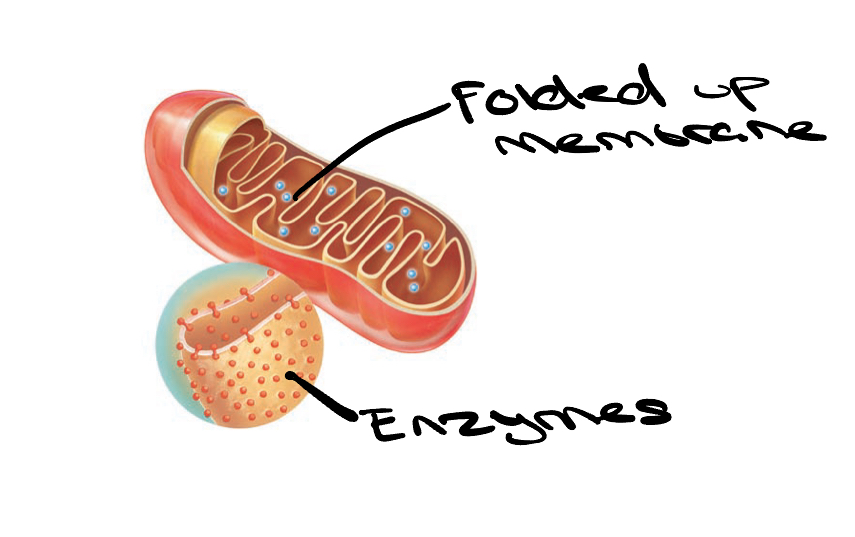
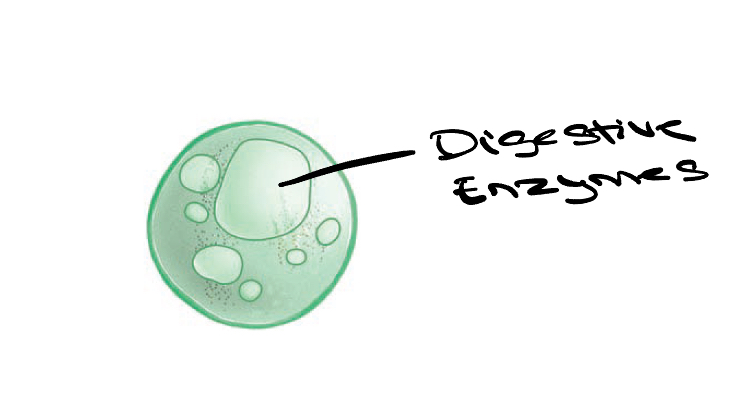
What are lysosomes?
Vesicles from the golgi apparatus that contain digestive enzymes, lysosomes fuse with other vesicles that contain things we want to break down
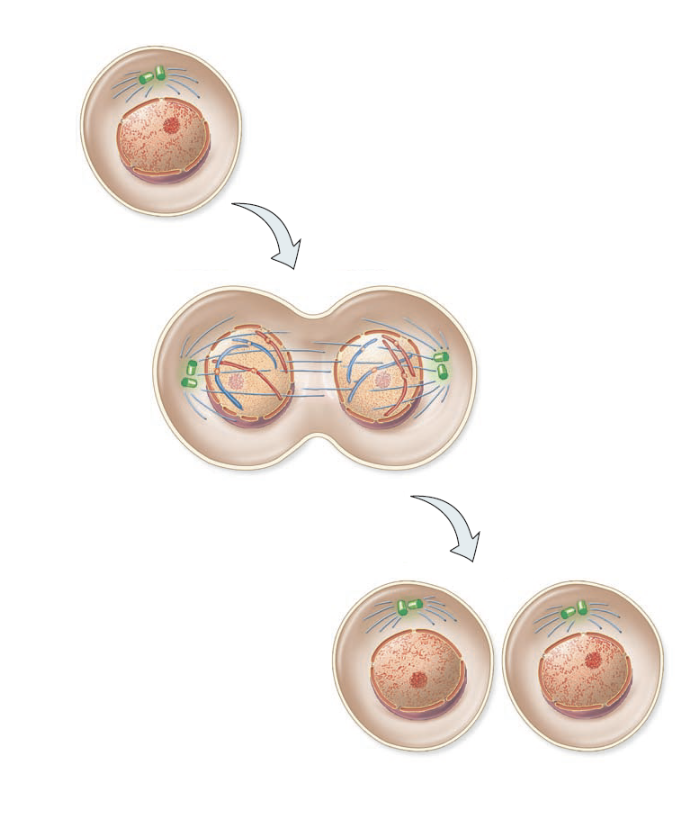
What is mitosis?
Mitosis refers to cell replication within the body, during the process an exact copy of the original cell is made inclluding the DNA and organelles, dividing to make 2 new cells identical to the original
What is the lipid bilayer?
Basic framework of the plasma membrane created by the lipid bilayer (2 layer of lipids)
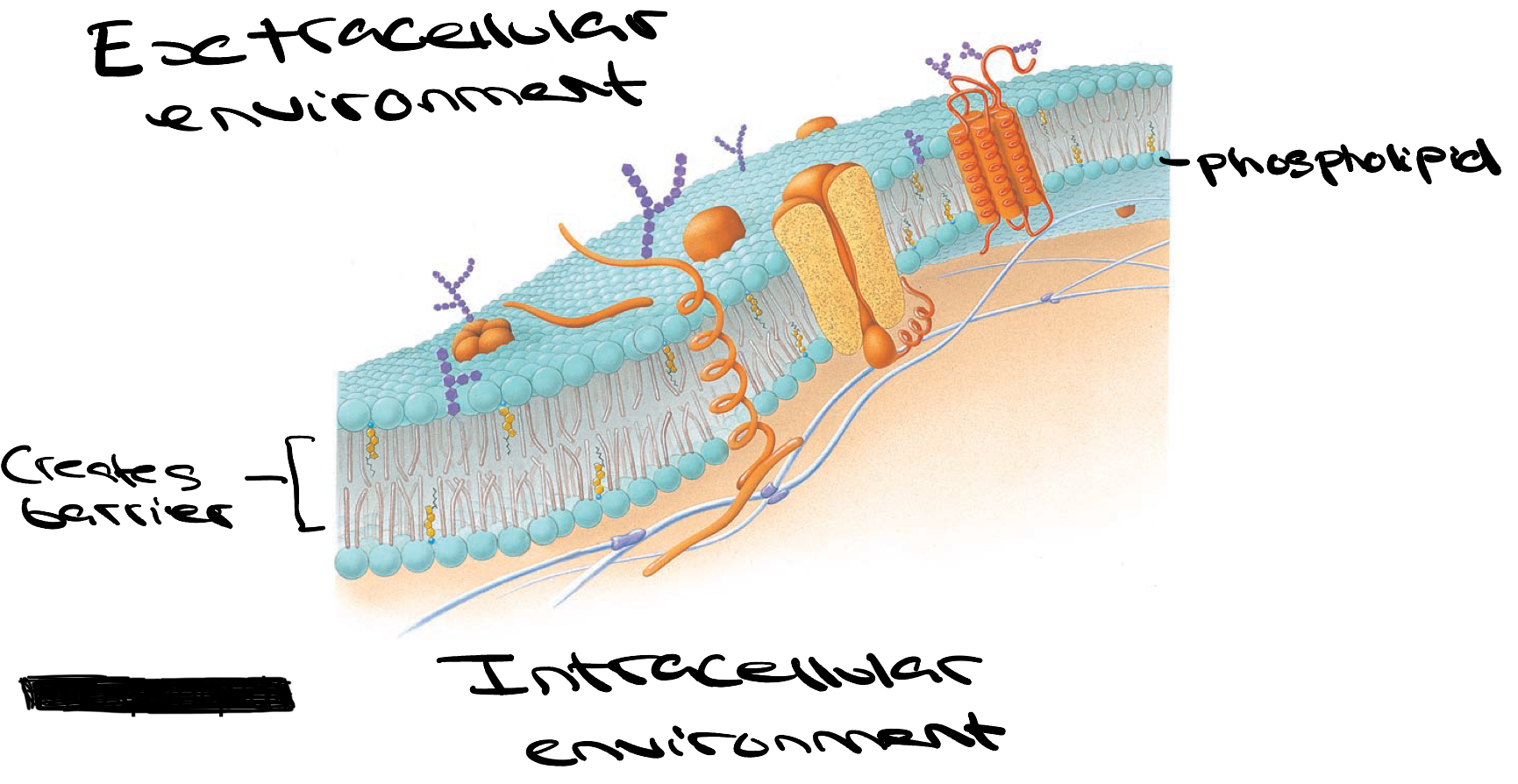
What are phospholipids?
Most abundant lipid in each layer, and are a lipid with a phosphate group attatched to it, the lipids are arranged in a bilayer because one end of the lipid is attracted to water (hydrophilic head) whereas one end is repelled from water (hydrophobic head) due to the polarity.
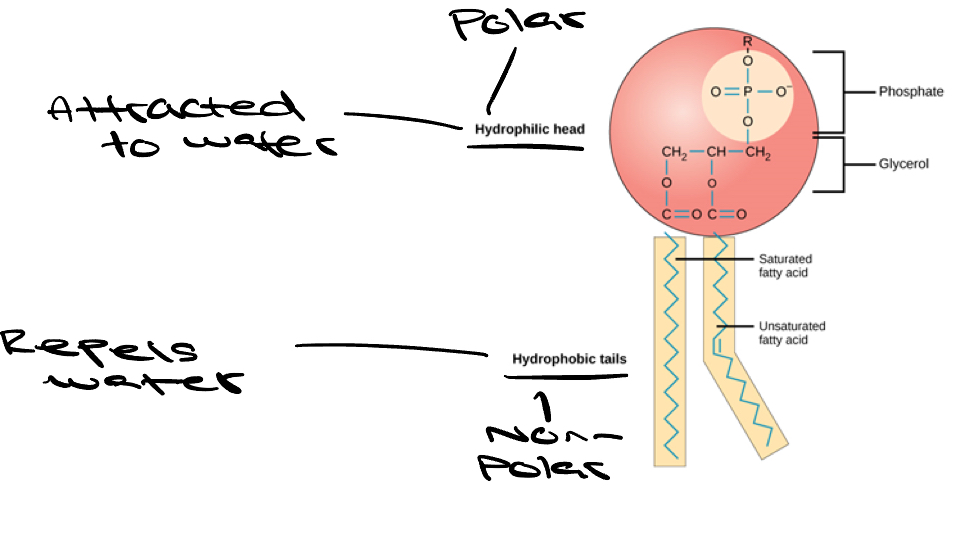
What are membrane proteins?
Located in the lipid bilayer, which can either be stuck to oneside of hte membrane or penetrate their way through
What are channel proteins? (type of membrane protein)
Proteins that form pores/holes through the plasma membrane, allowing ions to pass from one side to the other, can be semi permeable with a gate allowing flow from either direction.
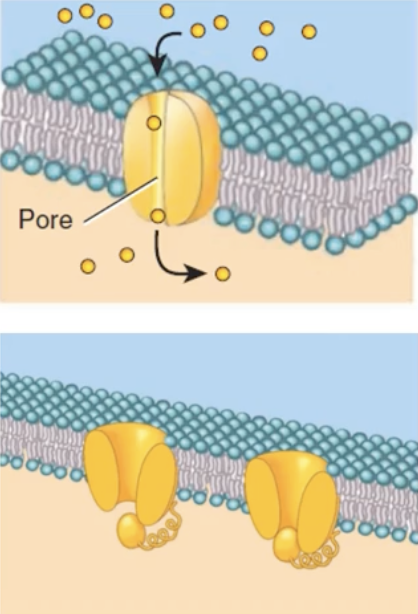
What are carrier proteins? (type of membrane protein)
Proteins that facilitate the movement of substances across the membrane, by changing shape to push substances across the plasma membrane, can facilitate flow from either direction
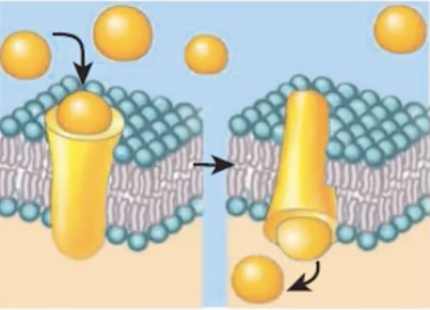
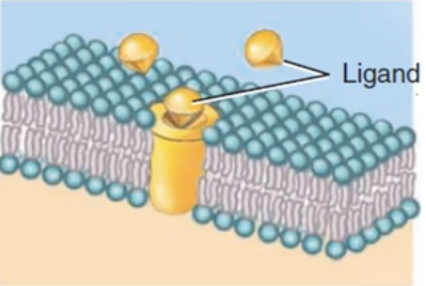
What are receptor proteins? (type of membrane protein)
Proteins of cell recognition site, where each receptor recognises and binds to a specific molecule, where once bound to the receptor, it can trigger it to change in a way initiating a cellular process
What is an enzyme protein? (type of membrane protein)
Proteins that catalyse specific chemical reactions, which can build or breakdown things
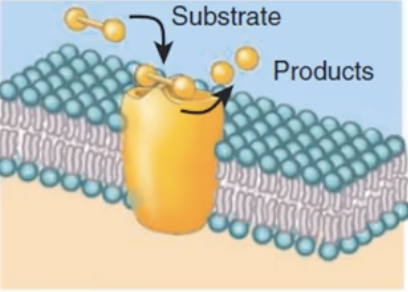
What are tissues?
A group of cells and the extracellular matrix (material between the cells which contains substances secreted from the cell, helping to provide structural support) that work together to carry out specialised activities
How can tissues be present?
Tissues can be solid (eg: bone), semisolid (eg: fat) or liquid (eg: blood) depending on extracellular matrix properties
What are epithelial tissues?
Epithelial tissue consist of cells arranged in tightly packed continuous sheets that form a membrane that covers another tissue, with very little extracellular matrix between cells; they form coverings throughout the body, suggesting they have a free surface, eg: outer layer of skin and they are also avascular meaning they dont have blood vessels
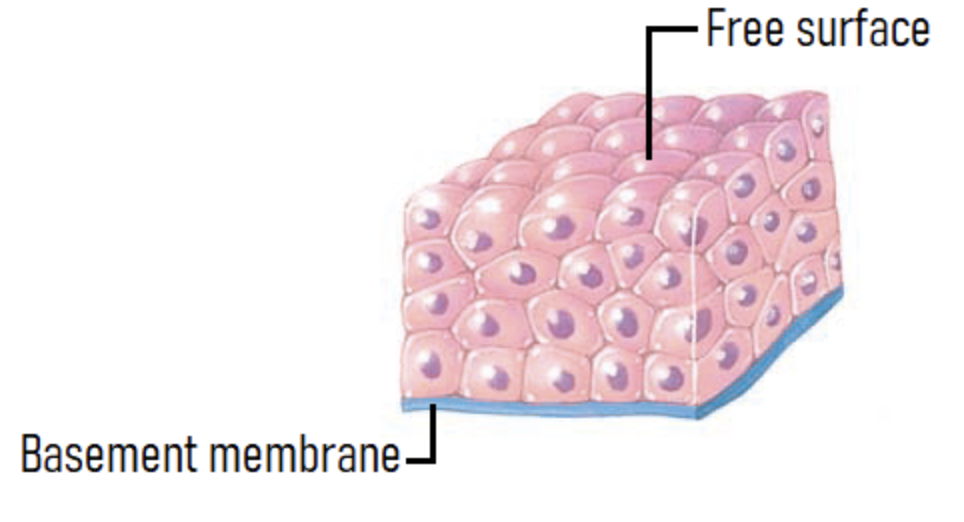
What are the functions of epithelial tissues?
Epithelial tissues act as selective barriers, regulating what enters or exits the body. E.g., The intestinal lining controls the absorption of nutrients from food and drink
Epithelial tissues are responsible for secretion, forming glands such as sweat glands, which release sweat to help cool the body
Epithelial tissues provide protection by forming a barrier against environmental elements, for example, the outer skin layer shielding the body
What are the basic structures of an epithelial tissue?
Apical surface: The side that faces the free surface of the tissue
Basal surface: Opposite to the apical surface, it faces the basement membrane
Lateral surfaces: The sides of the cell
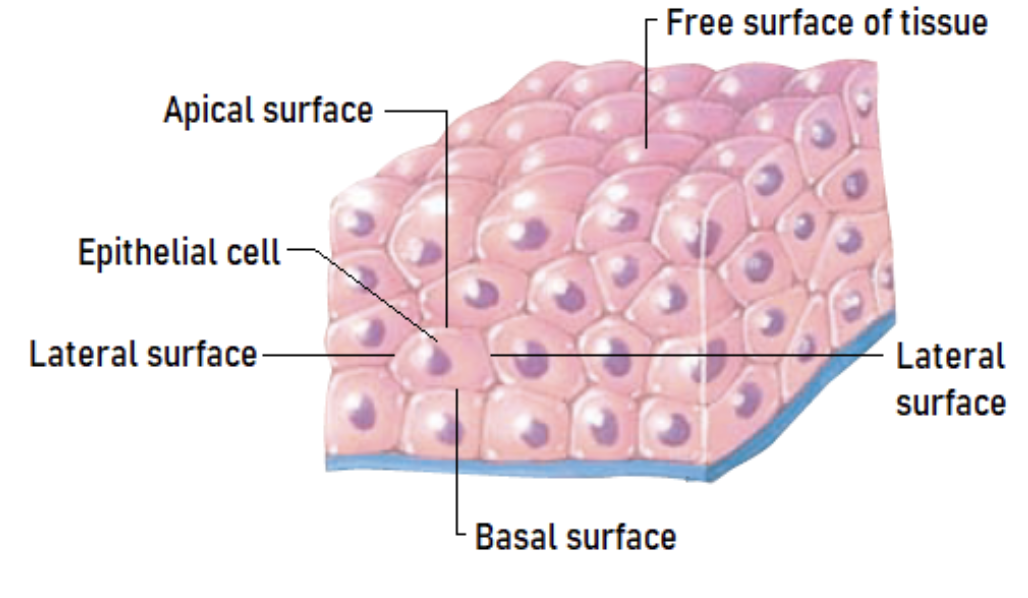
How many layers of cells can epithelial tissues consist of?
They can consist of a single layer (simple epithelium) of cells, or multiple layers (stratified epithelium) of cells
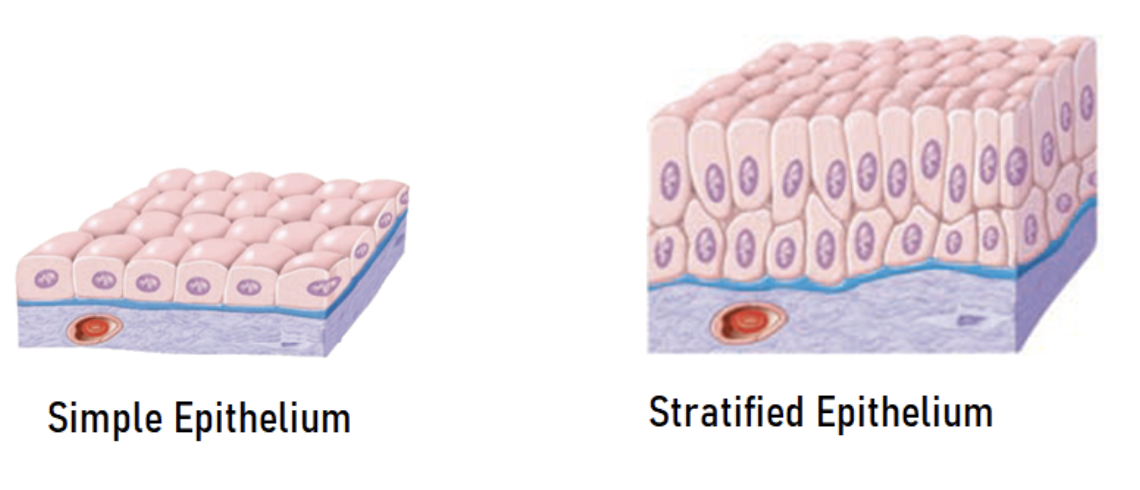
What is the structure of the stratified epithelial tissue?
The apical layer makes up the free surface of the tissue
The basal layer is attatched to the basement of the membrane

What are the 2 types of epithelial tissues?
Covering/lining epithelium (Covers a bodily fluid)
Flandular epithelium (makes a gland in the body)
What are the epithelial cell shapes?
Squamous (flat cells)
Cuboidal (cube shaped)
Columnar (column shaped)
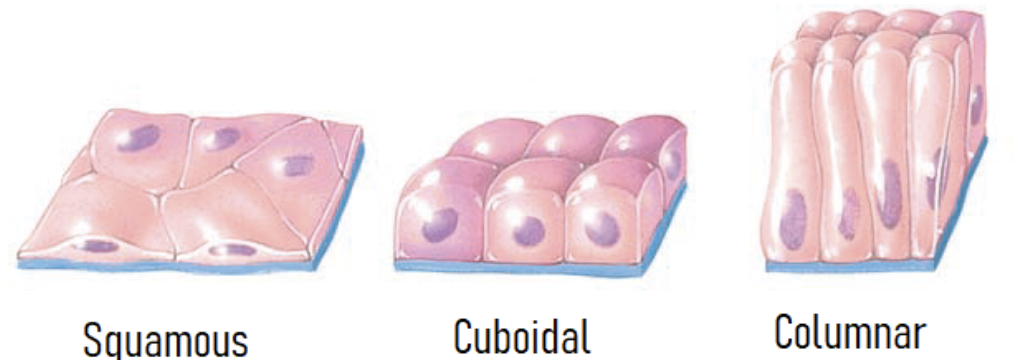
What is the glandular epithelium?
Glandular epithelium function is secretion; these cells can be isolated in the tissue; however, they often lie in glands
What are exocrine glands?
Multicellular structures with ducts that transport secretions to bodily surfaces, they come in different shapes, which all have ducts
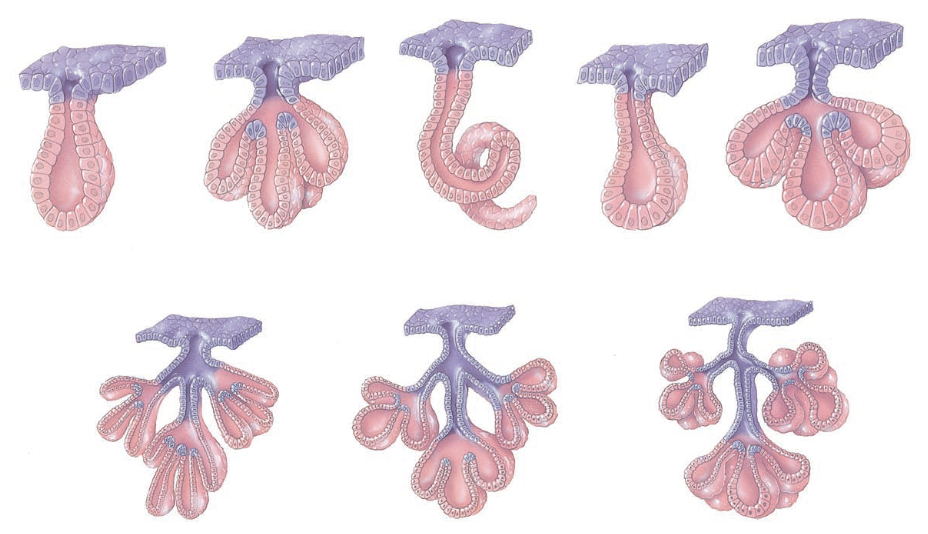
What are endocrine glands?
Endocrine glands produce and release hormones into the bloodstream, which distributes them throughout the body from which their name reflects their internal secretion (endo = within)

What are connective tissues?
The most abundant and widely distributed tissue in the body, with its primary role to bind things together.
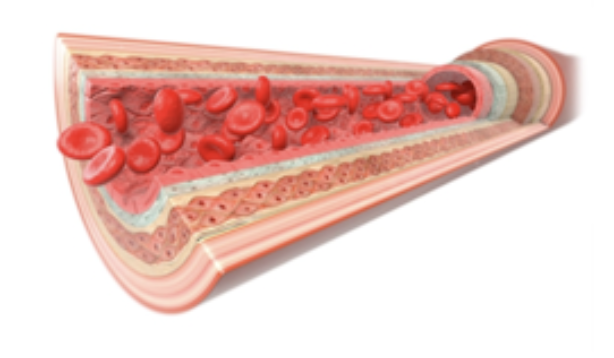
What is the extracellular matrix?
The aspect that defines the state of the connective tissue (solid, semi solid, liquid) is made up of 2 major components called the ground substance and extracellular protein fibres
What are the different types of extracellular protein fibers?
Collagen fibres: Strong and resist tension, but are not stiff, allowing tissue flexibility
Elastic fibres: Highly elastic, with the ability to be stretched with pulling force is applied to them, then going back to original length when force is released
Reticular fibres: Net like fibres, which describes structures of the fibre, form a network of branched proteins which gives the tissue a supporting frame
Ground substance: Fills the space between the cells and fibers; can be solid, semi-solid, or liquid. it supports the cells by retaining water and facilitating substance exchange with the blood

What are the types of cells in the extracellular matrix?
Specialised cells: Carry out function of the tissue
Immune cells: help fight infection in the tissue and help repair injury to the tissue
Fat cells: Store energy substrates the tissue can use to create ATP
What are the connective tissue components?
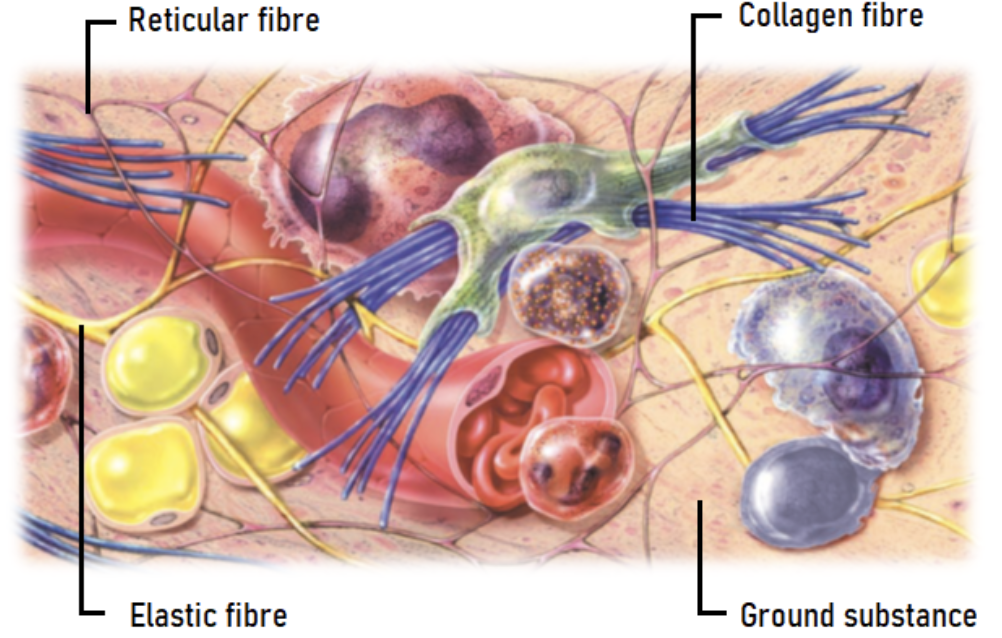
What are the classifications of connective tissue?
loose connective tissue
Dense connective tissue
Liquid connective tissue
Cartilage
Bone
What are the 3 types of muscle tissues?
-Skeletal muscle tissue: Made up of skeletal muscle fibres
-Cardiac muscle tissue: Made up of cardiac muscle fibres
-Smooth muscle tissue: Made up of smooth muscle fibres
What is the primary property of muscle cells?
-The ability to contract or activate, which allows the tissues to significantly change their shape and length, causing it to force a separation on neighboring tissues: Example:
In skeletal muscle tissue, the force produced by the muscles can move the bones and joints of the body, allowing you to move around.
In cardiac muscle tissue, the force can change the shape of the heart to pump blood around the body.
In smooth muscle tissue, the force can propel food through your intestines to aid with digestion.
What are the types of specialized cells in nervous tissue?
Neurons: which transmit electrical signals around the body for communication purposes
Neuroglial cells: Aid the neurons in carrying out their function and then the extracellular matrix support both cell types
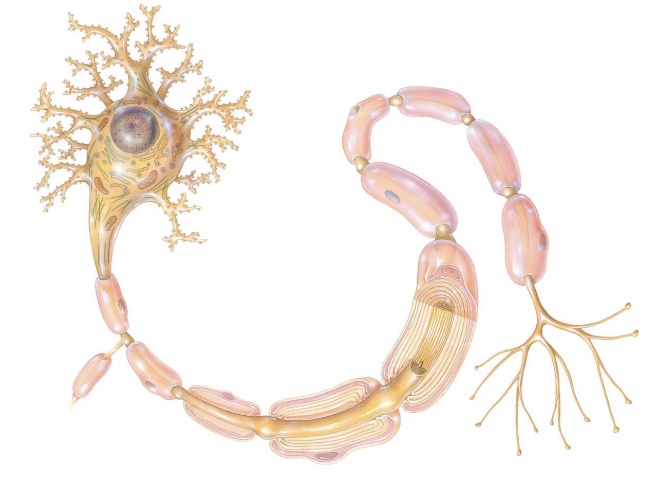
What are cell junctions?
-The contact points between the adjacent plasma membranes of the connected cells, cell junctionsassist in joining adjacent cells together
What are gap junctions?
-Allows the diffusion of substances from one cell to the other, where substances from one cell diffuse through the tunnel and get to the cytoplasm of the adjacent cell
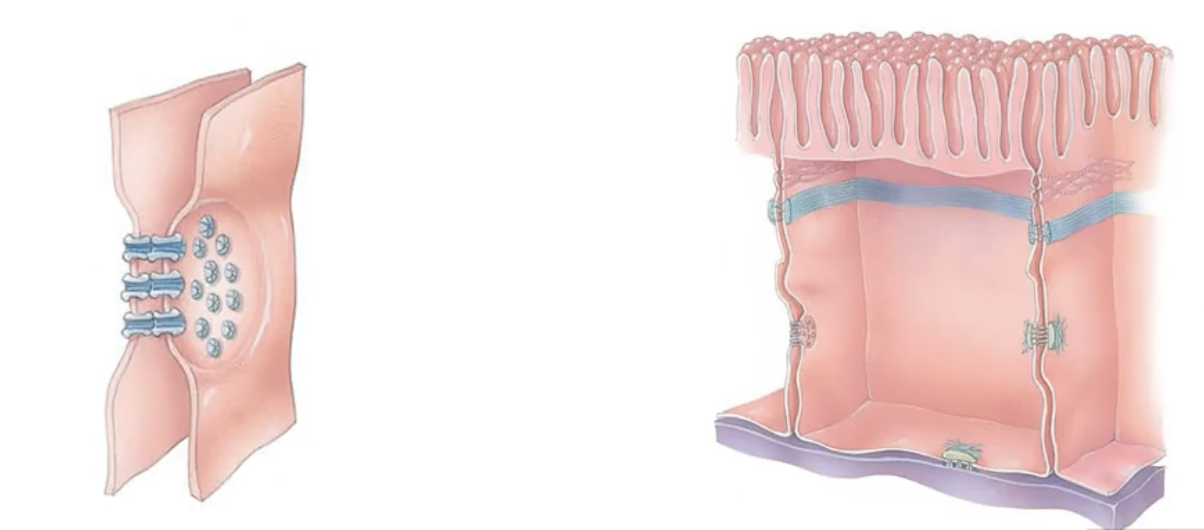
What are desmosomes?
-They strongly adhere 2 cells together
-Common when cells are pulled apart from one another and to make sure they stay stuck together through the employment of the desmosomes
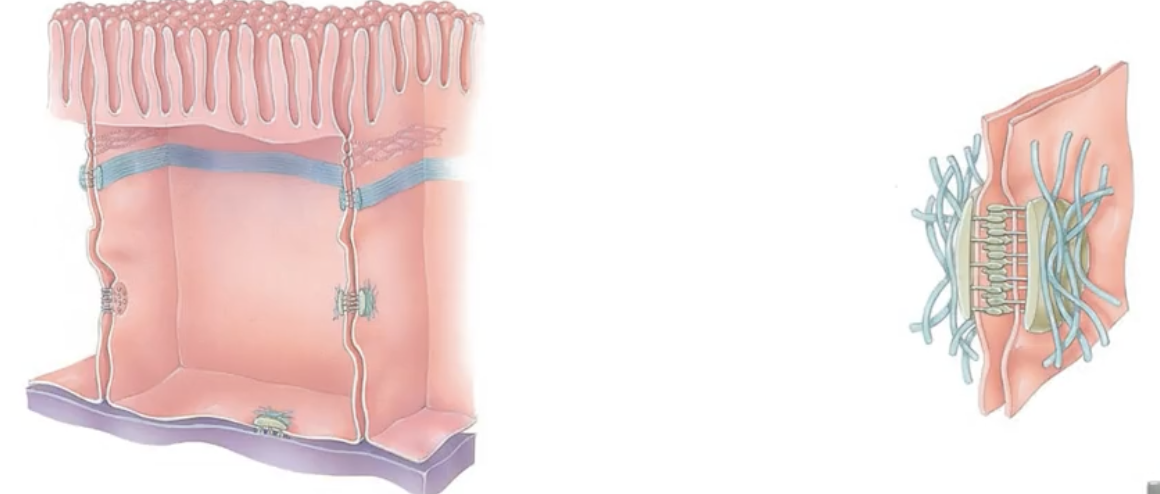
What are tight junctions?
A junction that is employed to stick 2 cells together so that theres a fluid-tight seal, which are beads of proteins which wrap around the plasma membrane so that fluids cant move between the gaps
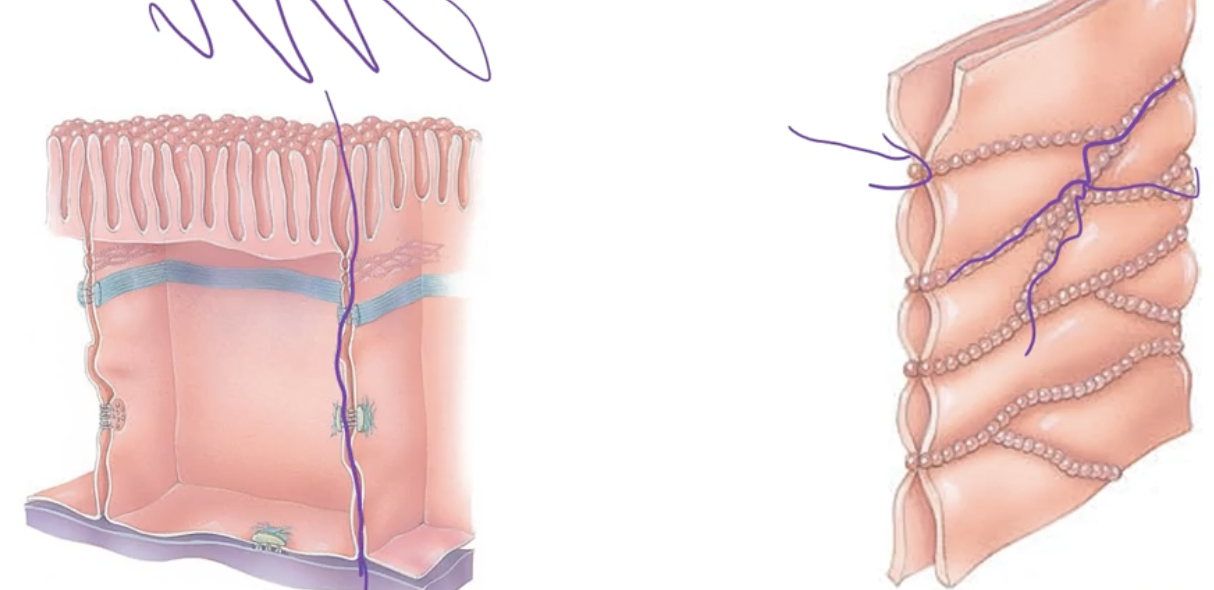
What are mucous membranes?
Mucosa line Body cavities are connected to the outside world, such as the mouth, stomach, nasal cavity, digestive, urinary, and reproductive tracts. They consist of epithelial layers with underlying connective tissue and are kept by mucus. they are found in wet areas accessible without crossing the bodys outer wall
What are serous membranes?
Serous membranes (serosa) line body cavities that are not connected to the outside world, such as the abdominal cavity. They consist of an epithelial layer over connective tissue and have two layers with serous fluid in between, providing lubrication for internal surfaces. These membranes require cutting through the body wall to access and play a key role in protecting organs like the heart and lungs.
What is homeostasis?
The condition of balance in the body’s internal environment allowing for optimal functioning for organisms, homeostasisis acheived when all different chemicals in the body are within their normal concentration ranges
What is homeostatic control and what is most prominent in the control?
-The nervous system an endocrine system are the most prominent systems involved in homeostatic control
-The nervous system sends very fast, very targeted messages using electrical impulses
-The endocrine system uses chemical messengers called hormones which trael via the blood stream
-Although hormones are distributed all over the body, only some cells have receptors for them so the message is still somewhat targeted
-The endocrine system is much slower then the nervous systme but has effects for a greater period of time
What is the feedback system in homeostasis?
Monitoring
Stimulus disrupts homeostasis
Receptors detect disruption and send an input
Control center receives processes informationsends outputs
Effectors work to correct disruption to homeostasis
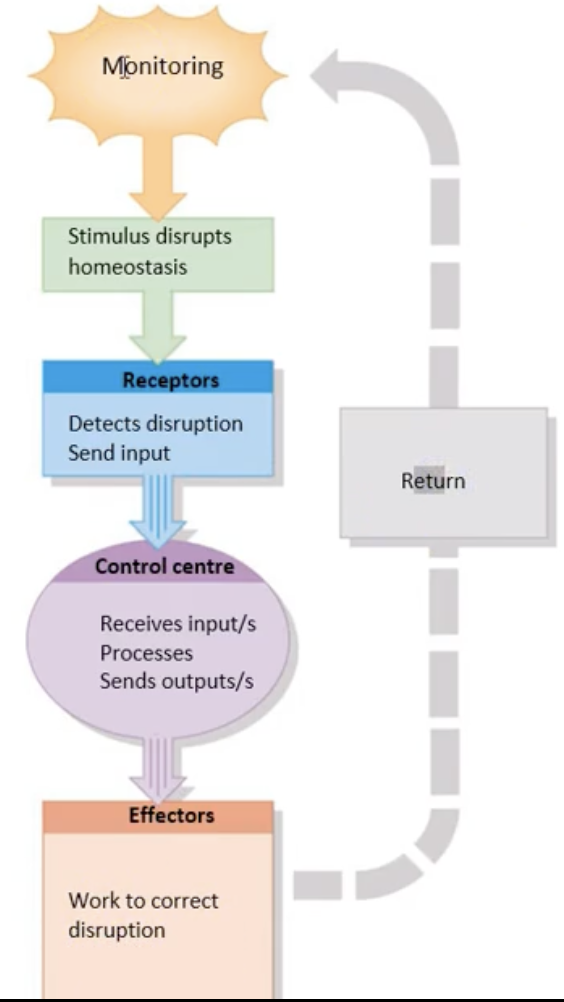
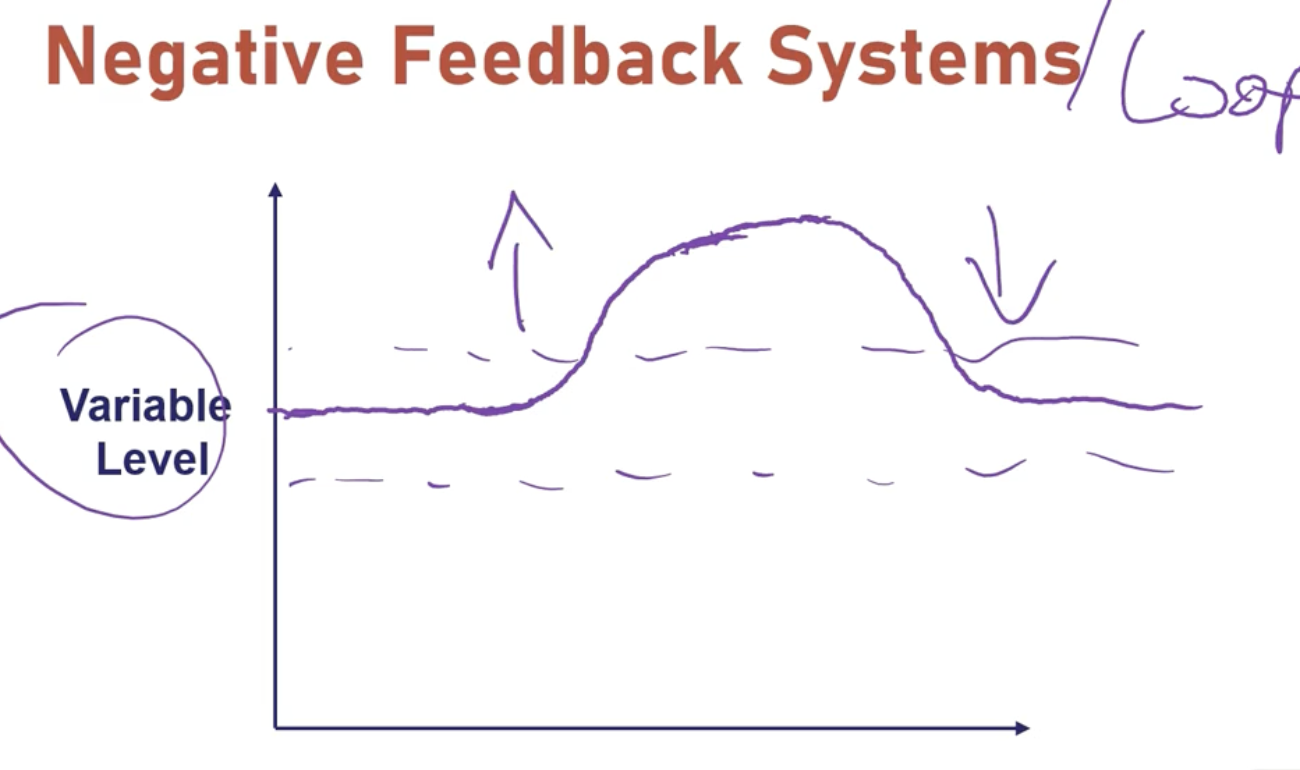
What is a negative feedback loop?
When the initial change is opposite to the eventual response which indicates its a negative feedback loop
What is a positive feedback loop?
When initial stimulus is increasing and result of feedback loop is also increasing indicates a positive feedback loop